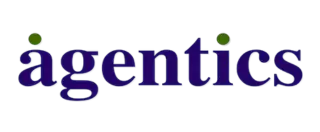
Comparing the Best Artificial Intelligence Chatbot for Business Needs
GeneralOverview
This article provides a comprehensive comparison of the leading artificial intelligence chatbots tailored for business needs, meticulously highlighting their functionalities, benefits, and limitations. It asserts that advanced AI chatbots significantly enhance customer service by offering 24/7 support and improving operational efficiency. However, it also addresses critical challenges, including:
- Limited emotional intelligence
- The essential role of human oversight in managing complex interactions
Understanding these dynamics is crucial for businesses looking to leverage AI effectively.
Introduction
The rise of artificial intelligence has undeniably transformed the landscape of customer interaction. AI chatbots have emerged as essential tools for businesses striving to enhance both efficiency and service quality. By delving into the intricacies of the most effective AI chatbots, organisations can unlock significant benefits, including around-the-clock support and streamlined operations that significantly boost customer satisfaction.
However, as companies navigate the diverse offerings and pricing models, they face the critical challenge of balancing automation with the necessity for human empathy in complex interactions.
What factors should businesses consider when selecting the right AI chatbot to meet their unique needs and ensure a positive user experience?
Understanding AI Chatbots: Definition and Importance
The best artificial intelligence chatbot represents an advanced software application designed to simulate human-like conversations through text or voice interactions. By leveraging natural language processing (NLP) and machine learning algorithms, these systems serve as the best artificial intelligence chatbot, comprehending user inputs and generating relevant responses. Their role in business is undeniably crucial; the best artificial intelligence chatbot provides 24/7 assistance, significantly enhancing service by ensuring inquiries are addressed swiftly, even outside conventional business hours. Notably, 35% of client requests occur when contact centres are closed, underscoring the necessity for round-the-clock support.
Moreover, Agentics’ advanced AI virtual assistants streamline operations by automating repetitive tasks and engaging with clients through chat, SMS, or messaging applications. This capability not only reduces response times by up to 80% but also enables human agents to concentrate on more complex issues. Such operational efficiency is vital, as 92% of contact centres report that AI minimises the time spent resolving client issues. As companies increasingly embrace AI technologies, understanding the functionalities of the best artificial intelligence chatbot becomes essential for maximising its potential to enhance client interaction and boost productivity.
Real-world examples underscore the effectiveness of the best artificial intelligence chatbot as conversational agents. For instance, Barking & Dagenham Council achieved an impressive 533% return on investment within nine months of implementing an AI assistant, demonstrating substantial cost savings alongside improved client satisfaction. Furthermore, 80% of users report positive experiences with automated assistants, reflecting their growing acceptance as reliable support tools. With the global market for conversational AI projected to expand at a compound annual growth rate of 24.5%, businesses must acknowledge the transformative power of Agentics’ AI solutions in modernising customer service and operational strategies.
Exploring Different Types of AI Chatbots: Features and Use Cases
AI conversational agents can be classified into two primary categories: rule-based and AI-driven systems. Rule-based conversational agents operate on predefined scripts, responding solely to specific commands, making them suitable for managing simple tasks such as frequently asked questions. In contrast, the best artificial intelligence chatbot, such as those offered by Agentics, leverages advanced machine learning and natural language processing (NLP) to understand context and provide more sophisticated responses. This capability allows for a more interactive user experience.
The applications of AI conversational agents are diverse, encompassing service automation, lead generation, and enhancements in internal communication. For instance, Agentics’ intelligent virtual assistants streamline operations by understanding, learning, and escalating issues, significantly improving client engagement and operational efficiency. Furthermore, AI conversational agents have shown remarkable success in customer support roles, resolving issues 18% faster than traditional methods and achieving a 71% success rate in addressing customer inquiries.
Across various sectors, AI virtual assistants are transforming operational procedures. In healthcare, 56% of organisations report satisfaction with AI assistants, while in retail, 67% express similar sentiments. Additionally, 73% of companies in the technology sector indicate satisfaction with AI conversational agents, highlighting their widespread acceptance across industries. These implementations not only enhance customer engagement but also improve operational efficiency, positioning the best artificial intelligence chatbot as an invaluable asset for businesses looking to modernise their communication strategies. However, it is crucial to acknowledge that 61% of users report that automated assistants do not fully understand their needs, and 48% state that their tools fail to accurately resolve user problems. This underscores that while AI conversational agents offer significant benefits, challenges remain to be addressed. As one study noted, “40% of consumers don’t care whether their query is dealt with by a human or a chatbot,” reflecting the increasing acceptance of chatbot technology.
Evaluating Costs: Pricing Models of Leading AI Chatbots
The pricing landscape for AI conversational agents is notably diverse, reflecting the varying capabilities and deployment models available. Basic rule-based conversational agents typically start at around $5,000, while advanced AI-driven solutions can range from $30,000 to over $500,000. This variance is influenced by features such as natural language processing (NLP) and integration capabilities.
Subscription models are widespread, with numerous providers offering tiered pricing based on usage. For instance, monthly fees for small enterprise chatbot plans typically range from $50 to $500, with basic functionalities beginning as low as $20. Businesses must carefully assess their specific needs and budget constraints when selecting a chatbot solution.
While the initial investment may appear considerable, the potential for substantial long-term savings is evident. AI chatbots can automate up to 67% of common inquiries, significantly improving operational efficiency and client satisfaction. A cost analysis reveals that while live agents handling simple queries can cost approximately $12,240 annually, a chatbot can perform the same function for only $348 per year, underscoring the financial advantages of adopting AI-driven solutions.
Additionally, ongoing maintenance costs are necessary for updating the chatbot’s knowledge base and functionality. Ultimately, investing in a customised chatbot solution not only streamlines processes but also positions organisations for enhanced user engagement and loyalty. Furthermore, the pay-as-you-go (PAYG) pricing model offers flexibility for businesses with fluctuating needs, allowing them to pay based on actual usage.
Analyzing Benefits and Limitations: What to Expect from AI Chatbots
The best artificial intelligence chatbot provides a multitude of advantages, including 24/7 support availability, significant reductions in operational costs through the automation of routine tasks, and enhanced data collection leading to deeper insights about clients. However, these systems are not without their challenges. A primary concern is their limited emotional intelligence, which can lead to miscommunication in complex interactions.
For instance, while automated assistants excel at addressing basic inquiries, they often falter in intricate scenarios that demand empathy or a nuanced understanding of client needs. Statistics indicate that 65% of users prefer their questions resolved without human intervention; nevertheless, 46% still opt for live assistance when faced with more complex issues.
Businesses must thoughtfully evaluate these elements, weighing the efficiency benefits derived from AI systems against the necessity for human oversight in complicated customer interactions. At Agentics, we acknowledge these challenges and implement our DARE to Deploy AI™ process to ensure that we provide the best artificial intelligence chatbot customised to fulfil specific business requirements.
This process commences with the Discovery & Diagnostics phase, where we delve into your unique goals and pain points. Following this, we conduct an Audit & Agreement to develop a tailored proposal that addresses these challenges. Our Requirements & Readiness stage guarantees that we assemble the essential tools and establish clear milestones, while the Execution & Evolution phase centres on creating and refining AI systems that enhance user interaction.
Real-world examples, such as the Barking & Dagenham council achieving a remarkable 533% ROI within just nine months of launching the best artificial intelligence chatbot, highlight the significance of maintaining a human touch in service to mitigate potential frustrations and ensure customer satisfaction. Furthermore, AI-powered tools can cut resolution times by up to 50%, illustrating their efficacy in streamlining customer interactions.
However, it is vital to recognise that 65% of users are inclined to abandon a business following a negative chatbot experience, highlighting the necessity for meticulous implementation and ongoing monitoring of chatbot interactions.
Conclusion
The exploration of artificial intelligence chatbots underscores their pivotal role in modern business operations. By simulating human-like interactions and providing round-the-clock support, the best AI chatbots significantly enhance customer service and streamline operations, ultimately driving productivity and client satisfaction. As businesses navigate the complexities of digital communication, grasping the varied functionalities and advantages of these systems is essential for leveraging their full potential.
Key insights from this comparative analysis highlight the distinction between rule-based and AI-driven chatbots, showcasing the latter’s ability to understand context and engage in more meaningful conversations. The financial implications of adopting AI chatbots are equally compelling, with substantial long-term savings and efficiency gains evident in cost comparisons. However, the challenges associated with emotional intelligence and the necessity for human oversight in complex interactions remain critical considerations for businesses seeking to implement these technologies effectively.
Reflecting on the transformative power of AI chatbots, it is clear that their integration can redefine customer engagement and operational strategies across various industries. As the market continues to evolve, businesses are encouraged to assess their unique needs and explore the best artificial intelligence chatbot solutions available. Embracing these advanced tools not only positions organisations for enhanced user satisfaction but also underscores a commitment to innovation in an increasingly competitive landscape.
Frequently Asked Questions
What is an AI chatbot?
An AI chatbot is an advanced software application designed to simulate human-like conversations through text or voice interactions, utilising natural language processing (NLP) and machine learning algorithms to understand user inputs and generate relevant responses.
Why are AI chatbots important for businesses?
AI chatbots provide 24/7 assistance, enhancing service by addressing inquiries swiftly, even outside conventional business hours. This is crucial as 35% of client requests occur when contact centres are closed.
How do AI chatbots improve operational efficiency?
AI chatbots automate repetitive tasks and engage with clients through various messaging platforms, reducing response times by up to 80%. This allows human agents to focus on more complex issues, with 92% of contact centres reporting that AI minimises the time spent resolving client issues.
What are some real-world examples of AI chatbots’ effectiveness?
An example is Barking & Dagenham Council, which achieved a 533% return on investment within nine months of implementing an AI assistant, showing substantial cost savings and improved client satisfaction.
What is the user perception of AI chatbots?
About 80% of users report positive experiences with automated assistants, indicating their growing acceptance as reliable support tools.
What is the projected growth of the conversational AI market?
The global market for conversational AI is projected to expand at a compound annual growth rate of 24.5%.
Enjoyed this post? Share it with your network!
10 Best AI Sales Tools to Boost Your Team’s Performance

Discover the top 10 best AI sales tools to enhance team performance and drive revenue growth.
Mastering Test Call Numbers: A Step-by-Step Guide for Sales Directors

Elevate your communication with our guide on mastering test call numbers for sales success.
7 Ways Automated Outbound Calls Boost Sales Performance

Discover how automated outbound calls enhance sales performance and streamline communication.
